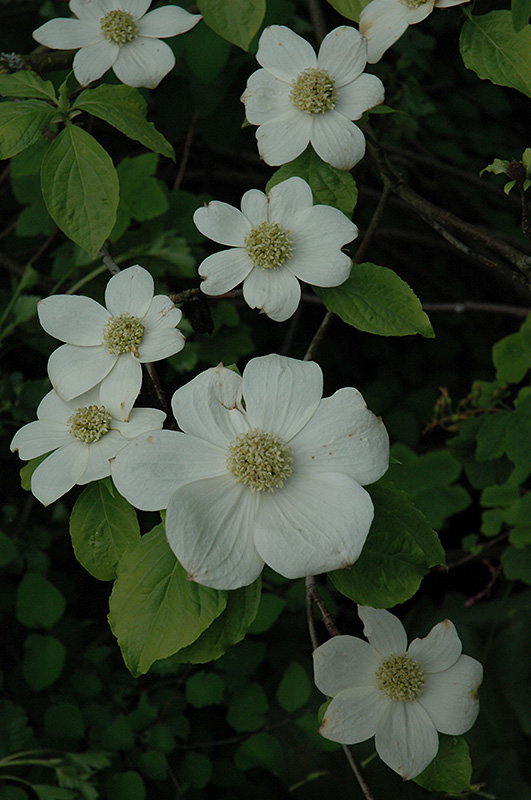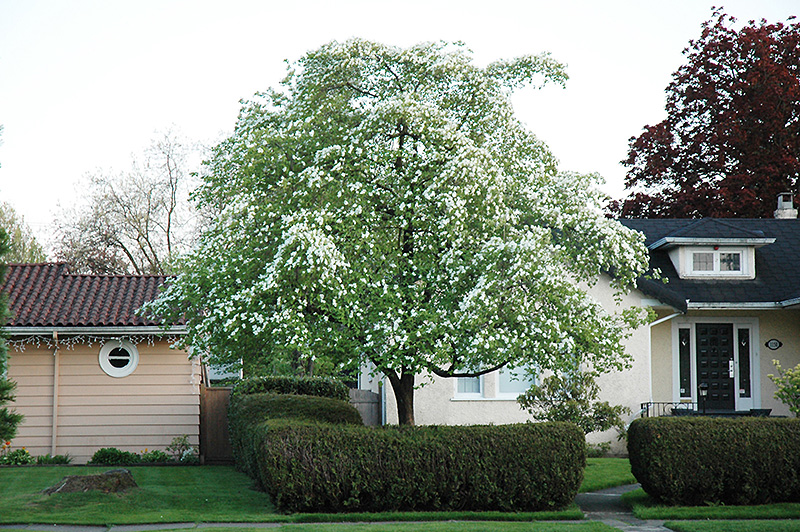Find Plants
* This is a "special order" plant - contact store for details
Height: 35 feet
Spread: 20 feet
Sunlight:
![]()
![]()
Hardiness Zone: 6
Other Names: Western Flowering Dogwood
Description:
A striking accent tree which features exceptionally showy white flowers in mid spring, and often a second flush in fall; the rest of the year features showy mottled bark and a neat growth habit; requires rich, well drained acidic soil
Ornamental Features
Pacific Dogwood has clusters of creamy white flowers with white bracts along the branches in mid spring before the leaves. It has dark green deciduous foliage. The pointy leaves do not develop any appreciable fall color. The mottled brown bark is extremely showy and adds significant winter interest.
Landscape Attributes
Pacific Dogwood is an open deciduous tree with a shapely oval form. Its average texture blends into the landscape, but can be balanced by one or two finer or coarser trees or shrubs for an effective composition.
This is a relatively low maintenance tree, and should only be pruned after flowering to avoid removing any of the current season's flowers. It is a good choice for attracting birds to your yard. It has no significant negative characteristics.
Pacific Dogwood is recommended for the following landscape applications;
- Accent
- Shade
Planting & Growing
Pacific Dogwood will grow to be about 35 feet tall at maturity, with a spread of 20 feet. It has a low canopy with a typical clearance of 3 feet from the ground, and should not be planted underneath power lines. It grows at a medium rate, and under ideal conditions can be expected to live for 50 years or more.
This tree does best in full sun to partial shade. You may want to keep it away from hot, dry locations that receive direct afternoon sun or which get reflected sunlight, such as against the south side of a white wall. It is very adaptable to both dry and moist locations, and should do just fine under average home landscape conditions. It is particular about its soil conditions, with a strong preference for rich, acidic soils. It is somewhat tolerant of urban pollution. Consider applying a thick mulch around the root zone in winter to protect it in exposed locations or colder microclimates. This species is native to parts of North America.
* This is a "special order" plant - contact store for details
Disclaimer - This Plant Finder tool is an online resource representing many of the varieties that we carry over the course of the season, and is intended for informational purposes only. Inventory varies seasonally, so we cannot guarantee that every plant will be in stock at all times - please contact the store directly for availability. It does not include our entire inventory of plants, so be sure to visit our store to see varieties that may not be represented on this list.


